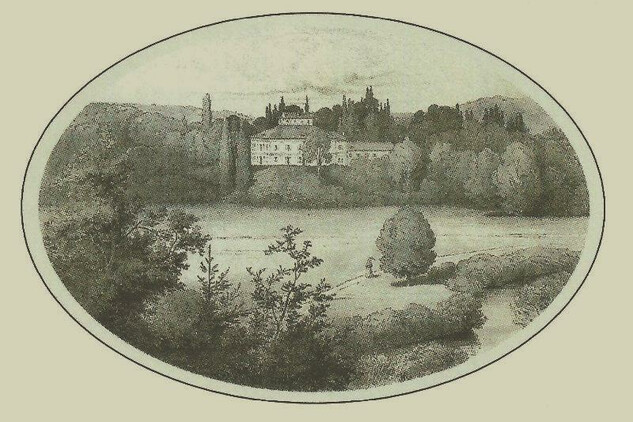History
The small chateau at Ratibořice was declared a National Cultural Monument due to the literary connection to the work of Božena Němcová. An extensive landscape park with natural components in the form of floodplain meadows along the river Úpa, rustic farmstead buildings including a water mill and mangle, but Panského hostince and Starého bělidla have formed the backdrop for the princely/ducal summer residence since the 18th century. The premises represent a preserved, cultivated environment, inhabited together by the aristocratic owners and simple rural people in the spirit of the Enlightenment and Romanticism of the 19th century. This unobtrusive rural residence of Wilhelmine, Duchess of Sagan served as a meeting place for politicians and statesmen during the Napoleonic Wars, which resulted in the organization of Europe for several decades. Noteworthy technical monuments include the mill and mangle, but also preserved fragments of the irrigation system enabling intensive farming of the meadow in the past. Exhibitions administered by the National Heritage Institute in the buildings of the chateau, mill, mangle and Starého bělidla are open to the public in accordance with the visiting rules. Occasionally tours with animated characters from Babička take place here.
More about the history of the castle
The first written record of the manor and village of Ratibořice dates back to 1388. The owner was knight Vaněk of Žampach, also referred to as “of Ratibořice”. Since 1464, Ratibořice belonged to the Riesenburg domain. The fort in Ratibořice wasn’t inhabited, began to decay, and ceased to exist in the end of the 16th century. In 1582, Ratibořice and Riesenburg were bought by the Smiritz House, and both were annexed by the large Náchod domain. After the Battle of the White Mountain, the Náchod domain was obtained by the house of Trčka of Lípa, The last Bohemian owner, Adam Erdman Trčka, was murdered with his brother-in-law Albrecht of Wallenstein in Eger in 1634.
In the same year, Emperor Ferdinand II gave the Náchod domain to Count Ottavio Piccolomini. Between 1702 and 1708, Count Lorenzo of Piccolomini had a baroque chateau built in Ratibořice, as a summer and hunting residence. It was built in the Italian “casino” style.
In 1792, the domain was bought by Peter von Biron, Duke of Courland and Semigallia. After his death in 1800, the domain was inherited by his eldest daughter Catherine Frederica Wilhelmina Benigna, Princess of Courland (*1781, +1839). The beautiful, rich and soulful duchess made Ratibořice her permanent summer residence. In 1825 – 1826, she had the chateau restored in classicist and empire style. A natural landscape park was established in the surroundings, to be extended over the whole valley of the Úpa River. Also built were a hunting pavilion and a palm greenhouse. The duchess invited numerous important people to the chateau, such as the Austrian chancellor Clemens Metternich or Russian Tzar Alexander I., and in 1813, she offered the chateau to diplomats of Prussia, Russia and Austria for secret negotiations on anti-Napoleonic coalition. She’s also known as The Duchess from the novel “The Grandmother” by Božena Němcová.
After the death of the Princess of Courland in 1839, the domain was sold to the Count Octaviano of Lippe – Biesterfeldu in 1840. In 1842, the domain, with 114 villages and small towns, numerous industrial plants and chateaus in Náchod, Chvalkovice and Ratibořice, was bought by Prince George Wilhelm Schaumburg-Lippe, a sovereign of a small princedom in the Northern Germany. The Schaumburgs had the chateau renovated between 1860 and 1864 to the current design. The members of the house were by their marriages connected to many royal European courts. The closest links were those to the Danish royal family. The chateau had been the property of the Schaumburg-Lippe house until the state took over in 1945.
The chateau and the nearby Babiččino údolí (Grandmother’s Valley) are very popular due to the Czech national author Božena Němcová (1820 - 1862). Her novel “The Grandmother” is an idealized picture of the writer’s childhood which she spent with her parents, siblings and beloved grandmother in Ratibořice. The book tells the story of country people, and their everyday life with its ups and downs.
Now the chateau, together with other buildings in the valley, is managed by the National Heritage Institute, regional section Sychrov.
